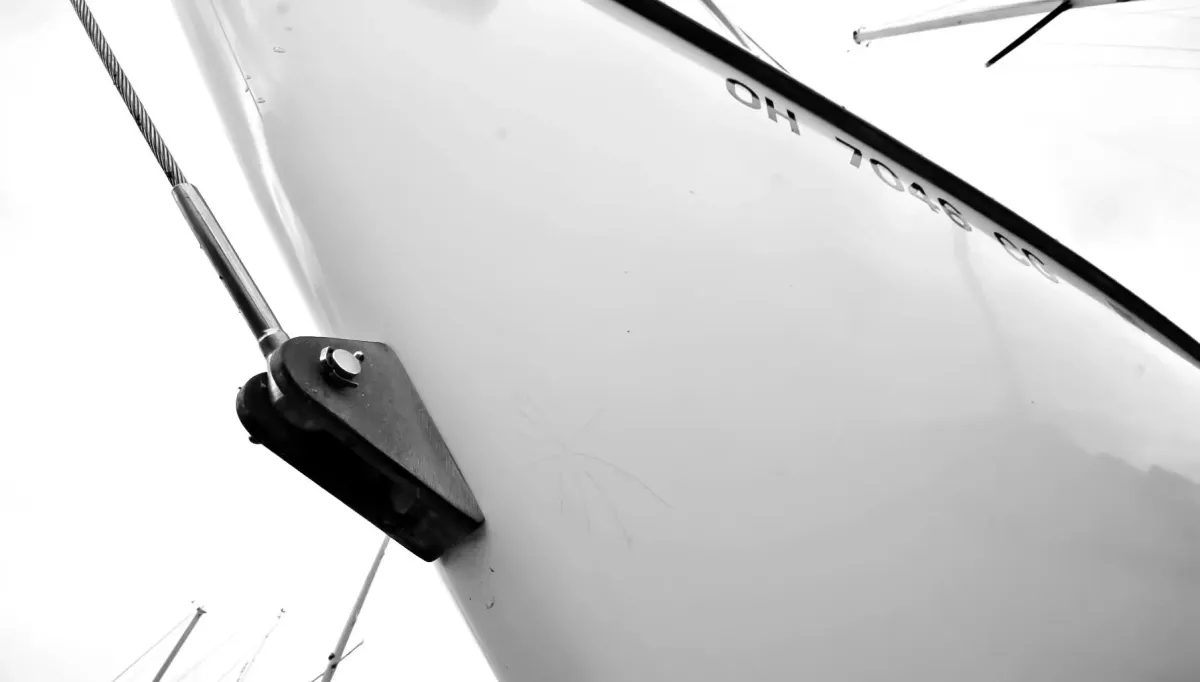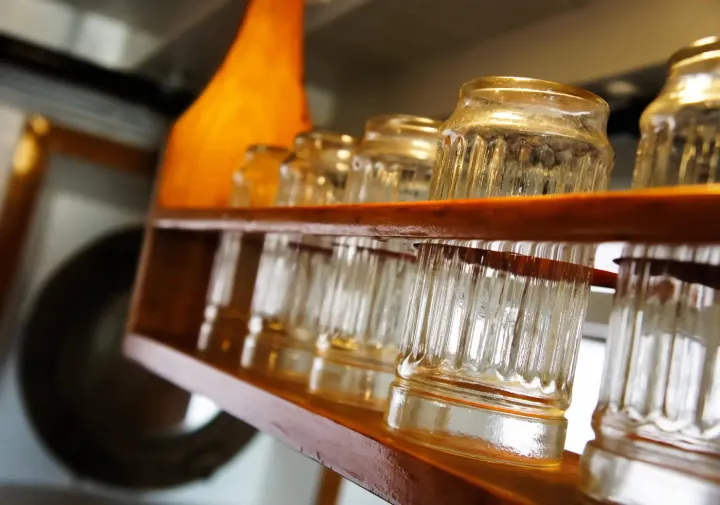The complete guide to removing the chalky gelcoat and returning the shiny polish to your boat's gelcoat.
The gelcoat of your boat has more use than just making your boat look good. It is a protective coating against the harsh salt, dirt, and growth of mold. Over time the gelcoat on your boat can have a dull and chalky appearance. How do you restore the shine to your gelcoat?
If your boat’s gelcoat has a chalky appearance it will need to be polished and waxed to return to its shiny appearance. If the oxidation is severe it may need to be sanded before polishing to restore its appearance. Your boat should be polished and waxed at least every six months to avoid a dull and chalky gelcoat.
Below we will look at what causes a chalky gelcoat and how it can be restored.
Oxidation and its Effect on Gelcoats
Oxidation is the damage by the sun's UV rays as it breaks down the gelcoat of your boat. When the gelcoat of your boat is left unprotected it will begin to break down and have a chalky or dull appearance. Not maintaining a regular washing and waxing schedule will contribute to the gelcoating breaking down in the sun.
Due to its porous nature, a boat’s gelcoat will oxidate and become damaged at a quicker rate. Improper products used on the boat’s finish will strip off its waxes and leave it more susceptible to damage. Boats require the proper maintenance with the correct products to maintain or restore the luster of their gelcoats.
Preventing Oxidation
Preventing your boat from oxidizing is more practical than trying to restore the gelcoat after it turned chalky. Cleaning and waxing your boat’s gelcoat is the main defense against it becoming chalky. Your boat should be thoroughly washed and dried every time it is pulled from the water. This will remove the salt and dirty water to prevent it from settling into the gelcoat of your vessel.
Use recommended products when you wash and wax your boat. Marine products are designed to work specifically on the coating of your boat. They will help keep it looking clean and polished without stripping the necessary protections your boat needs.
You will need to seal the gelcoat of your vessel with a marine protection wax. It should contain durable adhesives and UV filters which protect from the sun’s rays breaking down and oxidizing the finish in your boat.
Equipment Needed to Restore Your Boat’s Finish
Removing the oxidation from the gelcoat of your boat isn’t as simple as cleaning needed for an automotive finish. It will require dedicated marine products that are formulated for gelcoats.
You will need a variable-speed electric polisher to polish and sand your boat. Most boats are too large to attempt to sand or polish by hand. A variable-speed electric polisher will be able to tackle the tough job of polishing or sanding the dull gelcoat on your boat. You will also need a marine-grade polishing compound and plenty of polishing pads and applicator pads.
To clean the boat before polishing you will need a soft handheld brush, telescoping pole, wash bucket, a squeegee to remove the excess water, as well as an all-purpose cleaner, and stain remover is necessary. You will also need a wax sealant to seal your boat after it is washed, sanded, and polished.
Restoring the Gelcoat
Washing the Boat
Before you can begin removing the oxidation you will need to thoroughly wash your boat. Boats will accumulate salt, dirt, debris, and mold on their surface which will need to be removed before you can tackle the oxidation to the gel coat.
Tackling the Stains
If there are any stains on the bottom of your boat or near the waterline they will need to be removed. Rust stain remover can help but will require the use of safety equipment and caution when it is used. All the rust and stains need to be removed before you can begin polishing.
Sanding if Necessary
If the gelcoat is badly oxidized you may need to wet/dry sand the coating before you begin the polishing process. If you suspect that your boat will need sanding you can test a small area. Begin the polishing process, if it is having little to no effect you will need to sand the gelcoat before continuing to polish the gelcoat.
Polishing the Gelcoat
After you have completely cleaned and/or finished sanding the boat's surface you can begin applying the polishing compound. Choose a polishing compound directly made for marine gelcoat finishes.
Work in a small two-foot by two-foot area and rub the polish around the surface until you achieve a smooth glassy surface. It may be necessary to start with lower grit compounds and move to higher ones depending on the condition of the gelcoat. Continue this process with the multiple compounds all over the gelcoat of the boat bringing it to a high gloss shine.
Applying Wax
After you have polished the gelcoat you will need to protect the gelcoat. Apply wax with the polisher or a rotary buffer over the gelcoat. Work in small areas allowing the wax to dry to a slight haze. Remove the wax with a pad designed for wax sealants.
You should end up with a smooth, shiny, and transparent surface on your boat’s gelcoat finish. The wax will protect the gelcoat from oxidizing for a few months after it is applied.
Maintenance
Polishing and waxing your boat should be done at least every six months to maintain the surface of your gelcoat to prevent oxidizing. Hotter climates and frequent usage may require polishing and waxing more often. Cleaning your boat after every use will also remove any salt and contaminants that can damage and dull the finish on your boat.
Conclusion
Dull gelcoating is caused by improper cleaning and maintenance of the boat's surface. It will need to be polished to return its coating to a shiny appearance. Wet sanding may be necessary for badly oxidized gelcoat finishes.
Once it is cleaned and polished, a good coat of wax will protect it from oxidizing and becoming cloudy again.



